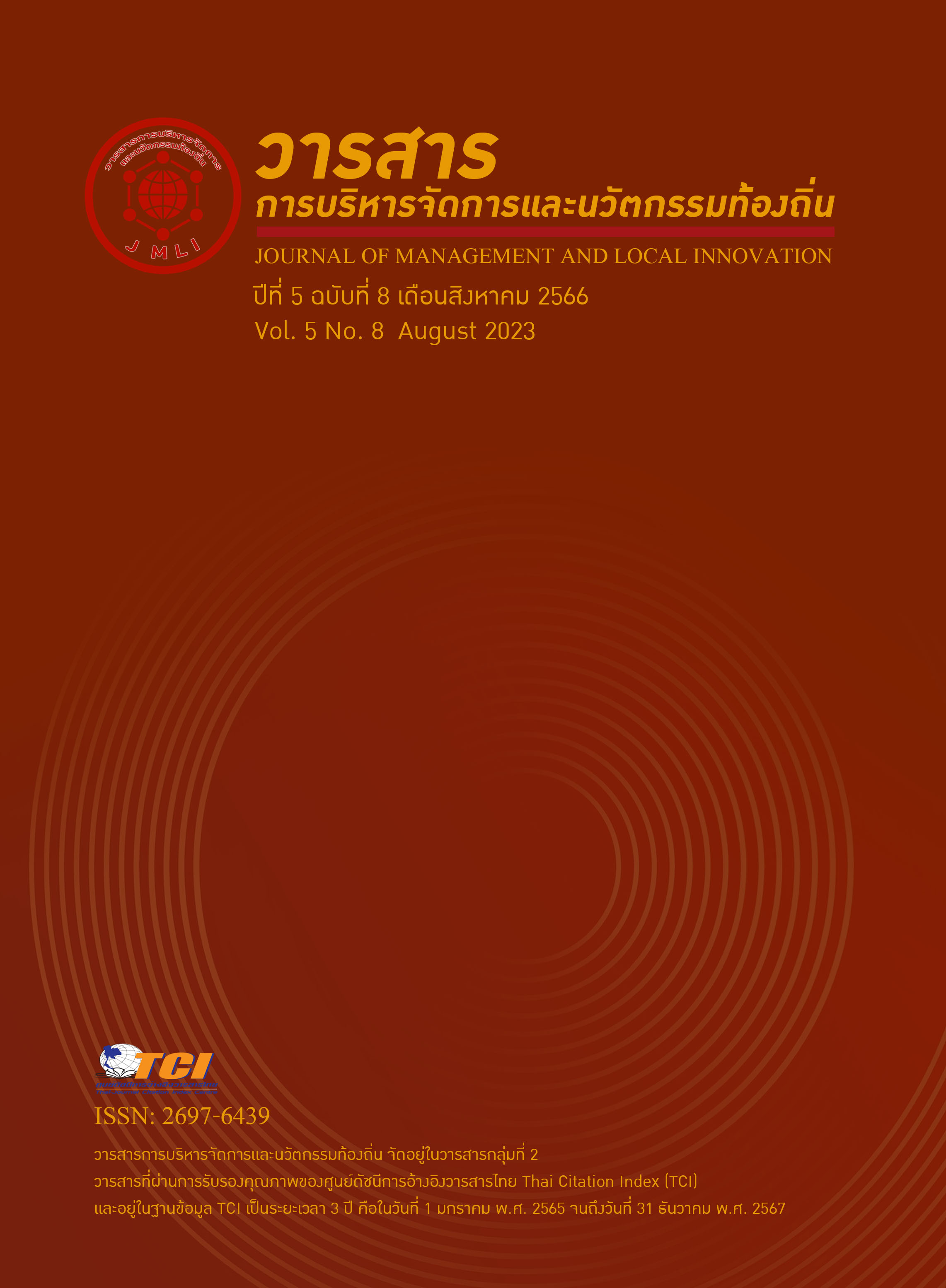Guidelines for the Participatory Student Affairs Management of Small Schools under the Office of Uttaradit Primary Educational Service Area 1
Keywords:
Student Affairs Administration, Participation, Participatory Student AffairsAbstract
This research aims to 1. To study the state of the participatory student affairs administration of small schools. 2. To find guidelines for participatory student affairs administration of small schools. 3. To assess the suitability and feasibility of a small school participatory student affairs administration approach. In this study, it was mixed research. The population was the principal and teachers in a small school total 455 people. The sample is Directors and teachers in small schools, a total of 282 people Derived easily, which the researcher used in the study in objectives 1 and 3. And the sample group used in the second study consisted of 3 small school administrators, 3 teachers in charge of student affairs, 1 psychologist in an educational area, Director of an educational management promotion group in an educational area. 1 student, 1 school committee and 1 parent, total 10 people aacquired by choosing specific. The research tools were questionnaires and interview forms. Data were analyzed using percentage, mean, and standard deviation and content analysis.
The research results show that the participatory student affairs administration of small schools The Affiliation Office of the Elementary Education Area, District 1, in the picture is included in the level of the participatory student business management approach in each area is 1. Student activities Meetings should be organized by inviting the parent and community school board to clarify the student activity framework that the school has organized, such as field trip activities. External agencies are invited to support the activities of the school, such as the Scout-Catch ad era. Including opportunities for communities Come to participate in the activity by having the community be part of that activity 2. Welfare and service work the school should consult. Discuss with the parent and community school board to create a health promotion school project development plan. Create a network of courtesy external agencies to participate in projects such as safe vehicle driving projects. Joint funding for budgets from agencies External and coordinate with nearby schools to recommend further education to students 3. Discipline and behavior the school should continuously study the conditions, problems, and behavior of students. Order problems that occur with survey students/Screening and storing information for screening students with current risk behavior. Class teacher assignment, coordination, understanding problems Find solutions directly with parents. 4. In the care system for students the school should establish a knowledge and understanding of the framework to help students to parents, students know together. Coordinate, invite external agencies to train for knowledge. Basic counseling for prevention / correction Risk group students/The group has problems for teachers, clearly creating student information and providing opportunities for parents to support the activities that promote student development in each group, such as promoting music activities in talented students. 5. Field of teaching There should be a meeting The planning committee joins the parent and community school board to outline the extracurricular teaching activities. And the results of the assessment of the suitability and feasibility of the small school student administration approach. Sang Keng Office of the Elementary Education Area, Uttaradit District 1 found to be the most appropriate.


